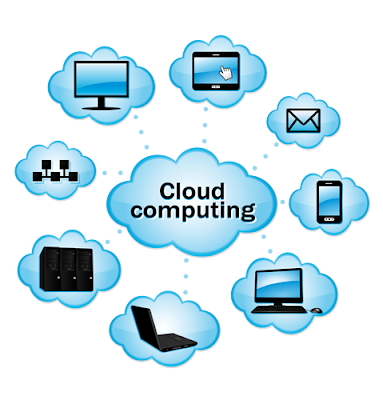Cloud Computing
What is Cloud Computing?
Cloud Computing is the delivery of different computing services through the Internet. This service includes tools and applications like data storage, servers, database, networking, and software.
Rather than keeping a file on the local system, you can store it on cloud storage so that if required anywhere you can download it using the internet you do not need to carry your storage device along with you everywhere.
Companies providing these services are known as cloud providers like Amazon, Google, and Microsoft.
Microsoft is a leading global provider of cloud computing services for all types of business. The cloud providers handle the physical hardware required to execute your work and keeping it up to date.
The common services offered by the cloud providers are:
- Compute Power
- Storage
- Networking
- Analytics
1. Compute Power:
As consumers, we all depend on the cloud computing service provided by the various cloud provides that make up the internet. When you want to use resources of cloud computing there are three options available: VM, Containers, and Serverless Computing.
VM: It stands for Virtual Machine is a virtual computer or a compute resource that uses software instead of a physical computer to run any program and deploy the application. Virtual machines allow businesses to run an OS that behaves like a completely separate computer over the internet. The virtual machine runs as a process in an application window, similar to any other application on the OS of the physical machine.
Containers: It provides an isolated environment to run the application without any interference. It is similar to VM except they don't require a guest OS. Instead, the application and all the required files are packaged in a container, and then it is executed in an environment.
Serverless Computing: Serverless computing is a method of providing backend services on an as-used basis. A serverless provider allows users to write and deploy code without the hassle of worrying about the underlying infrastructure. A company that gets backend services from a serverless vendor is charged based on their computation and does not have to reserve and pay for a fixed amount of bandwidth or number of servers, as the service is auto-scaling.
Principles of Cloud Computing
Enablement: Plan for cloud computing as a strategic enabler, rather than as an outsourcing arrangement or technical platform.
Cost/benefit: Evaluate the benefits of cloud acquisition based on a full understanding of the costs of cloud compared with the costs of other technology platform business solutions.
Enterprise risk: Take an enterprise risk management perspective to manage the adoption and use of the cloud.
Capability: Integrate the full extent of capabilities that cloud providers offer with internal resources to provide a comprehensive technical support and delivery solution.
Accountability: Manage accountabilities by clearly defining internal and provider responsibilities.
Trust: Make trust an essential part of cloud solutions, building trust in all business processes that depend on cloud computing.






Comments
Post a Comment